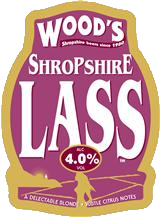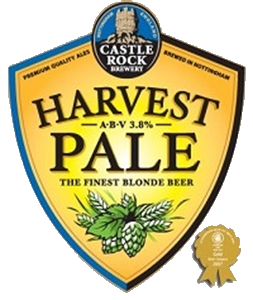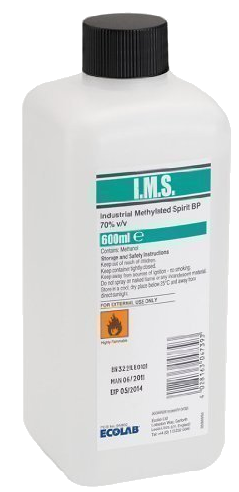Invertebrate specialists and alcohol problems
As someone who studies invertebrates, I often find myself turning to the bottle. Whilst I would not recommend alcohol as part of a general approach to problem solving, I wouldn't be without it for preserving specimens. The animals I'm particularly interested in - spiders, harvestmen and, latterly, earthworms and springtails - are rather soft-bodied you see, and the accoutrements beloved of the coleopterist and dipterist - pins, plastazote, gum, card and the like - are of limited value to me; instead I require a copious supply of alcohol (and lots of little tubes).
IMS (by which I mean IDA) or even IPA will do; anything as long as it's not CDA. FFS. The first alcohol-related problem is all the acronyms! Another is deciding which type of alcohol to use and, equally importantly, finding a way to get hold of it. In this blog post I aim to provide some pointers through this maze.
Ethanol
 Ethanol is pure alcohol and is widely used to preserve invertebrates in institutions such as museums and universities. It is often said to be the best thing to use, especially if specimens are to be used at some point for molecular work such as DNA barcoding, since it provides the best available preservation down to the molecular level.
Ethanol is pure alcohol and is widely used to preserve invertebrates in institutions such as museums and universities. It is often said to be the best thing to use, especially if specimens are to be used at some point for molecular work such as DNA barcoding, since it provides the best available preservation down to the molecular level.
 But there's a problem with ethanol; it is the recreational drug of choice for many humans, being the active ingredient of such tasty beverages as Wood's Shropshire Lass, Bank Top's Gold Digger and Shepherd Neame's Spitfire. Oh and Salopian's Oracle. And Charlie says that Salopian's Shropshire Gold is also excellent, but her number one is Castle Rock's Harvest Pale. Where was I? Oh yes, the problem is that if it was generally available, people would buy ethanol and mix it with fruit juice and such - probably nowadays liquidized broccoli or something equally disgusting - and undermine the economy of the western world. So the availability of pure ethanol is, understandably, tightly controlled.
But there's a problem with ethanol; it is the recreational drug of choice for many humans, being the active ingredient of such tasty beverages as Wood's Shropshire Lass, Bank Top's Gold Digger and Shepherd Neame's Spitfire. Oh and Salopian's Oracle. And Charlie says that Salopian's Shropshire Gold is also excellent, but her number one is Castle Rock's Harvest Pale. Where was I? Oh yes, the problem is that if it was generally available, people would buy ethanol and mix it with fruit juice and such - probably nowadays liquidized broccoli or something equally disgusting - and undermine the economy of the western world. So the availability of pure ethanol is, understandably, tightly controlled.
 Amateur invertebrate specialists can sometimes get hold of pure ethanol if they have contacts with institutions that are licensed to use it and supply it to associates for legitimate purposes, but the majority of us cannot. This needn't be a problem though because there are alternatives. If preserving specimens for molecular work is important to you, you are likely to be working with institutions that can supply you with some pure ethanol for the purpose, and even if not, there may be other acceptable solutions (see below). But for now, the majority of us do not preserve specimens with a view to carrying out molecular work on them, but rather to build reference collections to help us with ID or to preserve specimens for examination by someone else (or ourselves at a later date). For us there are several perfectly good alternatives to pure ethanol.
Amateur invertebrate specialists can sometimes get hold of pure ethanol if they have contacts with institutions that are licensed to use it and supply it to associates for legitimate purposes, but the majority of us cannot. This needn't be a problem though because there are alternatives. If preserving specimens for molecular work is important to you, you are likely to be working with institutions that can supply you with some pure ethanol for the purpose, and even if not, there may be other acceptable solutions (see below). But for now, the majority of us do not preserve specimens with a view to carrying out molecular work on them, but rather to build reference collections to help us with ID or to preserve specimens for examination by someone else (or ourselves at a later date). For us there are several perfectly good alternatives to pure ethanol.
Ethanol has a great many uses other than preserving invertebrates and helping to make beer what it is. So to make ethanol commercially available for these purposes it can be 'denatured', which essentially means adding other chemicals to it to make it unpalatable and unfit for human consumption. Most of the alternatives to pure ethanol for preserving invertebrates are types of denatured ethanol. Some will do the job as well as pure ethanol for our purposes.
IMS and IDA
Bug botherers used to be able to refer to Industrial Methylated Spirits* by the acronym IMS with impunity. But 'they' changed its name to Industrial Denatured Alcohol with the corresponding acronym of IDA, so now we must be prepared to refer to either IMS or IDA, depending on who we are talking to. But us naturalists can handle it: they are essentially just synonyms after all.
IMS/IDA is excellent for preserving invertebrates. Indeed 100% IMS (more commonly available at 99%) is often regarded as an acceptable substitute for pure ethanol if preservation is required for molecular work. Educational establishments, such as field centres and schools, can purchase up to 5 litres of IMS/IDA each year without a license, but individual amateur naturalists need a license from HM Revenue & Customs to buy it. The application form to obtain a license is available online here:
Go to section 19 of the online document to find the form. You need to print out section 19.1, fill it in and then send to HM Revenue & Customs by post (the address is indicated at the end of section 19.1). The license application is straightforward enough and I have successfully applied for a license myself in the past. I am currently licensed to purchase 2.5 litres of 100% IMS/IDA per year. One online supplier I have used is Reagent:
https://www.chemicals.co.uk/denatured-alcohol-ims-99-v-v-74-op-lrg
After ordering online it is normal for the supplier to contact you by email to ask to see a PDF of your license, so it's good to have a scanned copy of your license available as a PDF.
A couple of times over the last year or so I have talked to naturalists who were initially refused a license for IMS and asked to provide more information - specifically to say why CDA (Completely Denatured Alcohol) could not be used instead. Thankfully my most recent information from fellow naturalist Steve Whitbread is that he successfully applied for a license. He was careful to point out on his application form that the alcohol was "for storage of biological specimens in accordance with established practice" and he also stated that CDA could not be used. I would suggest using some words along the lines that "CDA is regarded as unsuitable for these purposes because the denaturants tend to be incompatible with the long term preservation of invertebrates in good condition". (See the section on CDA for more information on why it cannot be used.)
 For most invertebrate preservation work, IMS/IDA can be diluted to 70%. You should do this with deionized or distilled water (not tap water) which is easily purchased from any high-street chemist. It also has the advantage of making your IMS/IDA allowance go further.
For most invertebrate preservation work, IMS/IDA can be diluted to 70%. You should do this with deionized or distilled water (not tap water) which is easily purchased from any high-street chemist. It also has the advantage of making your IMS/IDA allowance go further.
Some more good news is that after a recent tip-off from Matthew Shepherd, I found out that 70% IMS/IDA can actually be purchased without a license - the license only being required for concentrations above 70%.
To prove to myself that this was so, I successfully purchased 3 litres of 70% IMS from this online supplier:
https://www.cleanroomshop.com/search.aspx?searchterms=industrial+methylated+spirit
Buoyed by this news Charlie also did some online shopping and purchased some at an even better rate here:
http://atomscientific.com/products.php?product=Industrial_Methylated_Spirits_70
If you need IMS/IDA at a higher concentration, then this is not an option for you, but for the majority of purposes, it is fine. It is often recommended that for earthworms, 80% IMS/IDA is used for preservation. I think that this is because these animals generally contain a lot of water in their bodies, so there is a problem of the alcohol being diluted significantly by them. However this problem can be mitigated by changing your 70% alcohol a few times after you have initially preserved your earthworm. And don't crowd your sample tubes with earthworms - keep a high alcohol to worm volume ratio.
IPA, Isopropyl and Isopropanol
 Until a few months ago, the only alcohol I referred to as IPA was India Pale Ale. A pint of this makes a very agreeable accompaniment to almost any invertebrate related work but it would be stretching it (a little bit) to argue that its a central part of the invertebrate specialist's toolbox. But I was recently told that IPA is also shorthand for Isopropyl Alcohol - which I've always referred to simply as Isopropyl. To add to the confusion, the same stuff is also known as Isopropanol. Whatever you call it, the important thing is that it can be used to preserve invertebrates (Isopropyl, not the beer; just drink the beer).
Until a few months ago, the only alcohol I referred to as IPA was India Pale Ale. A pint of this makes a very agreeable accompaniment to almost any invertebrate related work but it would be stretching it (a little bit) to argue that its a central part of the invertebrate specialist's toolbox. But I was recently told that IPA is also shorthand for Isopropyl Alcohol - which I've always referred to simply as Isopropyl. To add to the confusion, the same stuff is also known as Isopropanol. Whatever you call it, the important thing is that it can be used to preserve invertebrates (Isopropyl, not the beer; just drink the beer).
Another great thing about Isopropyl is that it can be bought without a license either over the internet or from many high street chemists. Like IMS/IDA it is normal to dilute it to 70% with distilled water for most invertebrate preservation purposes.
Isopropyl has a tendency to dehydrate specimens and can make them brittle. To mitigate this, you can add a little glycerol (which is available without a license!). Keith Lugg told me that he uses this for method his earthworms. He estimated that he adds 20 or so ml of glycerol to each litre of 70% Isopropyl he makes up. I've used the same method to preserve earthworms with no problems to date.
CDA
CDA stands for Completely Denatured Alcohol. Like IMS/IDA, CDA is made by adding chemicals to pure ethanol in order to make it unfit for human consumption. There are many different formulations for CDA. Until recently it was required that a dye (usually blue, pink or purple) was part of these formulations, but this requirement has now been dropped so CDA may become available as a clear liquid.
CDA is not suitable for preserving invertebrates. There was often an assumption that this was because of the dye - which would certainly have made it less suitable - but in fact there are other ingredients in the formulations, such as wood naphtha, which make them unsuitable, possibly causing a milky suspension when diluted with water.
Postscript
After this blog was first published, I got some reaction from people with other useful advice, some of which is reproduced here.
Keith Lugg told me (12/04/2015) that he found bio-ethanol on sale in B&Q 'for burners' which is 98% ethanol. Two litres was about £6. Keith dilutes this to 70% and adds some glyerol.
Adrian Chalkley wrote to tell me (02/06/2015): "companies who sell supplies for offset litho printers usually can supply Isopropanol which I use myself with glycerine to store my voucher specimen collection (as Suffolk recorder for freshwater inverts). I buy a 25 litre container every couple of years, store it in the shed and resell at cost price to other naturalists who need it. It's much cheaper than from a chemists and I have found a suitable company 5 mins drive away."
* Methylated Spirits - or Meths - is ethanol denatured by adding methanol which is poisonous. It is one of the best-known ways to denature ethanol, but there are many others.
- rich burkmar's blog
- Log in or register to post comments



